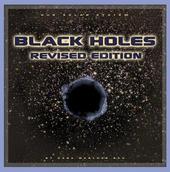
|
Black Holes (Our Solar System)
Paperback / softback
Main Details
| Title |
Black Holes (Our Solar System)
|
| Authors and Contributors |
By (author) Dana Meachen Rau
|
| Physical Properties |
| Format:Paperback / softback | | Pages:32 |
|
| ISBN/Barcode |
9780756554798
|
| Classifications | Dewey:523.8875 |
|---|
| Audience | |
|---|
| Edition |
Revised ed.
|
| Illustrations |
Illustrations, unspecified
|
|
Publishing Details |
| Publisher |
Capstone Press
|
| Imprint |
Capstone Press
|
| Publication Date |
9 December 2015 |
| Publication Country |
United States
|
Description
Describes the characteristics, formation, and study of black holes in our solar system.
Author Biography
Dana Meachen Rau is an author, editor, and illustrator of children's books. She has written more than 100 books for children, many of them nonfiction in subjects including astronomy, history, and geography, as well as numerous biographies. She lives in Burlington, Connecticut, with her husband and two children.
ReviewsRau gazes far beyond our astronomical neighborhood to introduce some of the universe's most mysterious and spectacular phenomena. Rightly noting in the first book that black holes by their very nature can neither be seen nor directly measured, she discusses what we can infer and theorize from indirect observations, then closes with a revealing 2004 discovery. In the companion volume, she describes the nature of our own galaxy, then presents a gallery of other types, along with brief mentions of quasars, clusters, and superclusters. Both books are illustrated with a mix of photos and digital art that usually reinforces or expands upon topics in the narrative and close with a column of extra facts, plus short lists of multimedia resources for further inquiry. Earning high marks for visual appeal, and for clear, specific presentation of material, these offerings make worthy additions or updates for most collections.-- "School Library Journal" The Milky Way, Black Holes, and Constellations are three new books in a series called Our Solar System. While these books cover topics that extend beyond the solar system, the concepts are of interest to a young reader fascinated by astronomy. The Milky Way describes our own galaxy, its characteristic parts and behavior, and our location in it. All of the information presented is supported by astronomical observations. The author discusses types of galaxies and galactice groupings, including the Local Group, larger clusters, and superclusters. She explains the currently accepted theory of the formation and expansion of the universe. Black Holes catches the reader's attention with a description of a most mysterious celestial object. The author discusses the concepts of gravity, escape velocity, and the speed of light to illustrate properties of thius boject. She describes the various hisotrical theories about black holes and looks at how we detect these objects today. In discussing their formation, the author makes an error, stating that stars die when their hydrogen is exhausted. Further, she fails to indicate that only supermassive stars form black holes during supernova explossions. However, these are the only points that are innacurate or overlooked and are probably the result of simplification for the reader. Constellations explores the patterns that humans have made out of the brightest stars in our night view. The author explains how the constellations came to be named, the significance of the patterns seen, and the generation of sky maps that astronomers have used for navigation. The book is rich in its discussion of the cultrues that have recognized constellations over the ages and how they have interpreted them in the light of their own mythologies. All three books are well written, with prose that is engaging. All of the pages contain one or more visual graphics, including photographs of the celestial objects discussed, the scientists involved, and statellites that acquire modern data. There are also many illustrations, including artists' interpretations, old woodcut prints of scientists and ancient equipment, and period maps. At the end of each books is a section entitled Did You Know? that presents interesting information which will catch the eye of a young reader. The books are enhanced by ending sections that include a glossary, an index, a bibliography for furhter reading, a Web-site address for additional resources, and a list of places to visit, such as museums and observatories. Any one of these books would make an excellent addition to a school library or classroom collection. Best Books for Children 2005-- "Science Books & Films"
|